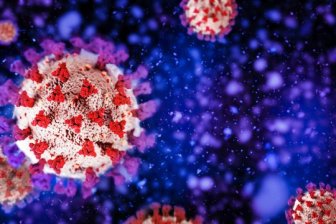January is not over yet, but with 1,217 COVID-19 deaths reported in Quebec this month, it is already the fifth deadliest month of the COVID-19 pandemic in the province.
Two health experts say the high death toll is partly due to Quebec’s slow campaign to deliver booster doses to people 70 and older living outside of institutional care.
“My suspicion is that there are a significant number of deaths and hospitalizations that could have been prevented if we had given our third dose earlier,” said Dr. Quoc Dinh Nguyen, a gerontologist at Center Hospitalier de l’Université de Montréal, said in an interview Tuesday.
As of January 21, approximately 87 percent of deaths associated with COVID-19 over the previous 28 days involved people 70 and older. And unlike in previous waves, most of those who died lived at home instead of in long-term care homes or private nursing homes.
Read more:
Quebec surpasses 13,000 COVID-19 deaths, the highest in Canada
As well, of the people 70 and older who died in the current wave, 22 percent were unvaccinated and 34.7 percent received a third dose of vaccine more than seven days before their death. The health department says 76 percent of Quebecers 60 and older received three doses of a COVID-19 vaccine and 94 percent received at least two.
Dr. Donald Vinh, a specialist in infectious diseases at McGill University’s health center, agrees with Nguyen. He said this month’s statistics – lower numbers of deaths in long-term care but higher numbers in the community – were the result of Quebec’s delayed third-dose vaccination campaign.
“There were vaccination teams that went into those institutions,” Vinh said in an interview Tuesday, referring to private nursing homes and long-term care homes, known in Quebec as CHSLDs.
“So it was great – unless you were not institutionalized seniors,” he said.
“If you live in the community, this is where the gap was.”
Quebec began administering third doses in long-term care centers in mid-October. The government did not make boosters available to people 80 and older living in the community until a month later, when the campaign to give third doses to long-term care and private elderly people came to an end. Appointments for boosters only opened at the end of November for people 70 and older.
Older people who lived at home, Vinh said, may not have known they needed a third dose, or they may have struggled to make appointments.

According to data from Quebec’s public health institute, 66.4 percent of those who died of COVID-19 this month lived in the community, compared to 33.6 percent in January 2021. In April and May 2020, the two deadliest months of the pandemic , less than 10 percent of COVID-19 victims lived at home, and the majority of the deaths reported involved people living in long-term care.
Another reason why January saw an increase in deaths is related to the explosion of cases at the end of December when officials reported more than 50,000 new cases over a few days, Vinh said. The number did not include the positive results of rapid tests taken outside official testing centers.
“What the pandemic has shown us is that the increase in community cases precedes the increase in deaths,” Vinh said, adding that the province should have done more to slow the spread of the disease by the end of December.
“This increase in deaths is not surprising, as it follows the increase in cases, but it is disappointing because it was preventable.”
READ MORE: Quebec announces slow reopening of COVID-19 restrictions, gyms, bars not included
Quebec has reported more deaths linked to COVID-19 than any other province, both since the start of the pandemic and in the past two weeks, according to federal government data. The province, which makes up less than 23 percent of Canada’s population, reported 45.5 percent of all COVID-19 deaths reported across the country in the past two weeks.
Tara Moriarty, a professor at the University of Toronto who wrote a report for the Royal Society of Canada on deaths related to the pandemic, said Quebec has a better – and faster – death reporting system than other provinces. The province is also testing more people for COVID-19 after death than almost any other province, she added.
In some parts of the country, she said, death statistics from the first wave are still being reported and she expects the death toll in other parts of the country to continue to rise.
“I think it’s very important at the moment that everyone across the country understands that what they see in Quebec is very likely to be in their own province, or will happen soon,” she said in a recent interview.
“I think people should look at Quebec and understand that this is probably the reality of what’s happening.”
View link »
© 2022 The Canadian Press
Reference-globalnews.ca

